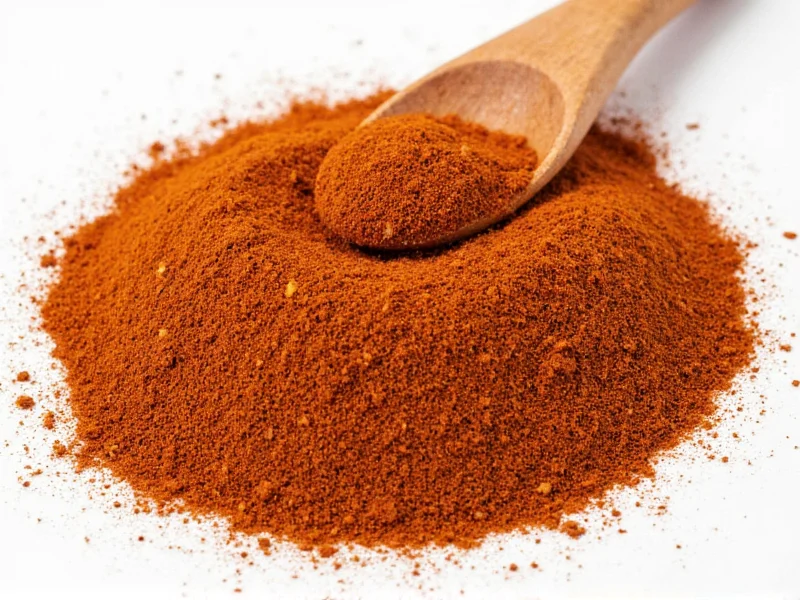Despite its name suggesting otherwise, chupacabra seasoning contains zero mythical creature components. The name plays on the chupacabra legend—a folklore creature said to drain livestock blood in Latin American communities—to create a memorable identity for spicy Mexican-style seasoning blends. These products deliver authentic regional flavors while leveraging cultural storytelling.
The Origin of the Name
The term chupacabra translates to “goat-sucker” in Spanish, originating from 1990s reports in Puerto Rico of mysterious livestock deaths. Though the creature remains folklore, food manufacturers adopted the name for its edgy, memorable quality. This naming strategy connects to Latin American culinary traditions while adding playful intrigue—a common marketing approach for spice blends targeting adventurous home cooks.
Typical Ingredients in Chupacabra Seasoning
Authentic chupacabra seasoning recipes follow traditional Mexican and Southwestern flavor profiles. Most commercial blends include these core components:
| Primary Ingredients | Flavor Contribution | Common Variations |
|---|---|---|
| Ancho and Chipotle peppers | Smoky depth with moderate heat | Substituted with smoked paprika in milder versions |
| Ground cumin | Earthy, warm base note | Often toasted before grinding for intensity |
| Garlic powder | Savory umami foundation | Frequently paired with onion powder |
| Coriander | Citrusy brightness | Sometimes replaced with dried oregano |
| Black pepper | Sharp heat accent | Cayenne added for extra spiciness |
How to Use Chupacabra Seasoning
This versatile blend enhances numerous dishes when used appropriately. Consider these application methods for optimal results:
- Meat rubs: Apply generously to chicken, pork, or beef before grilling. The spice mixture forms a flavorful crust while complementing natural meat flavors.
- Bean seasoning: Stir one teaspoon into black beans or refried beans during cooking for authentic Southwestern taste.
- Sauce enhancement: Mix with tomato sauce, sour cream, or mayonnaise to create dipping sauces with distinctive character.
- Roasted vegetables: Toss root vegetables in oil and seasoning before roasting for caramelized flavor development.
Chefs recommend starting with smaller quantities (1/2 teaspoon per serving) then adjusting to taste, as heat levels vary between brands. For authentic chupacabra seasoning recipe results, always toast whole spices before grinding when preparing homemade versions.
Cultural Context and Popularity
The adoption of chupacabra as a seasoning name reflects broader trends in food marketing that incorporate folklore and regional storytelling. While some might question using a creature associated with livestock deaths for food products, the name has gained acceptance as a playful reference within Latinx culinary communities. Many producers include educational information about the legend's origins on packaging, transforming potential controversy into cultural appreciation.
Food historians note similar patterns with other culturally inspired seasonings—like pirate's booty seasoning or dragon's breath hot sauce—where mythical references enhance product identity without literal connections to the namesake. This approach helps consumers connect emotionally with products while exploring new flavor profiles.
Homemade Chupacabra Seasoning Recipe
Creating your own blend ensures freshness and customization. This basic mexican chupacabra seasoning recipe yields approximately 1/4 cup:
- 2 tablespoons ancho chili powder
- 1 tablespoon smoked paprika
- 1.5 teaspoons ground cumin
- 1 teaspoon garlic powder
- 1 teaspoon onion powder
- 0.5 teaspoon dried oregano
- 0.5 teaspoon black pepper
- 0.25 teaspoon cayenne (optional for extra heat)
Combine all ingredients in a small bowl, whisking thoroughly. Store in an airtight container away from light and heat. Properly stored, homemade chupacabra seasoning ingredients maintain peak flavor for 3-4 months. For deeper flavor complexity, toast whole cumin seeds and dried chilies in a dry skillet before grinding.
Frequently Asked Questions
Does chupacabra seasoning actually contain chupacabra?
No, chupacabra seasoning contains no actual chupacabra ingredients. The chupacabra is a mythical creature from Latin American folklore, not a real animal. These seasonings are standard Mexican-inspired spice blends using common ingredients like chili peppers, cumin, and garlic.
How spicy is chupacabra seasoning typically?
Heat levels vary by brand, but most chupacabra seasonings range from medium to hot on the spice scale. They typically contain multiple chili varieties like ancho, chipotle, and sometimes cayenne. If sensitive to heat, start with half the recommended amount and adjust to your preference.
What dishes work best with chupacabra seasoning?
This seasoning complements grilled meats (especially chicken and pork), roasted vegetables, bean dishes, and tomato-based sauces. It works particularly well in recipes featuring corn, black beans, or sweet potatoes. Many cooks also mix it with sour cream or mayonnaise for flavorful dips.
Can I make chupacabra seasoning less spicy?
Yes, you can easily adjust the heat level. Reduce or eliminate cayenne pepper in homemade versions. For store-bought blends, mix with additional paprika or cumin to dilute the heat. Adding a small amount of sugar or citrus juice when cooking can also balance spiciness in finished dishes.
How should I store chupacabra seasoning for maximum freshness?
Store both commercial and homemade chupacabra seasoning in an airtight container away from light, heat, and moisture. A dark cupboard works well for most homes. Properly stored, commercial blends maintain quality for 1-2 years, while homemade versions stay freshest for 3-4 months. Avoid storing near your stove or oven where temperature fluctuates.











 浙公网安备
33010002000092号
浙公网安备
33010002000092号 浙B2-20120091-4
浙B2-20120091-4